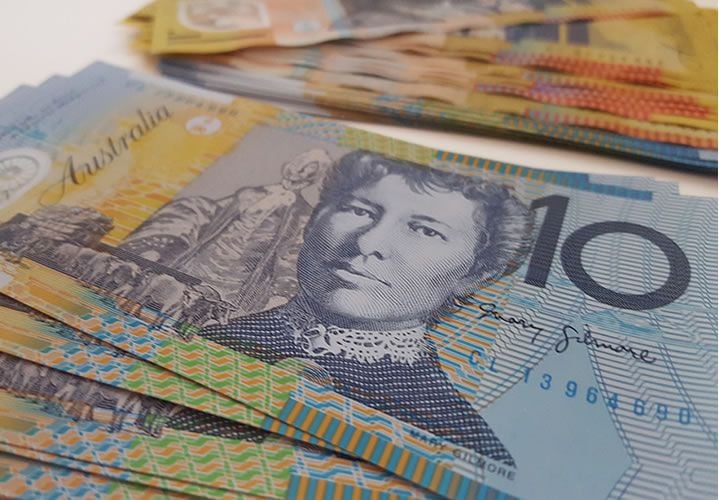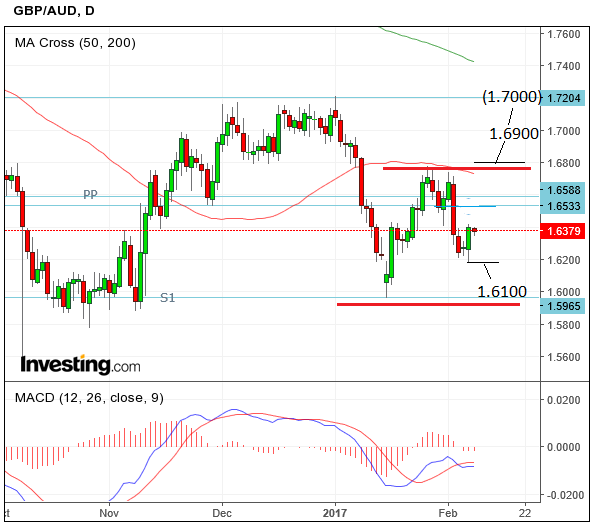The Two Key Levels for Pound / Australian Dollar Rate Over Coming Days

GBP/AUD is moving in a broad range on the charts without any strong directional bias which suggests we could see some erratic moves.
Often when markets are caught in a sideways move volumes drop as markets await for directional moves.
However, this falling volatility can often result in big swings within the range and this should keep things interesting for now.
Our studies suggest a break below Tuesday’s 1.6189 lows would tilt the outlook negatively and confirm a potential extension down to a target at 1.6100.
Meanwhile, a move above the 50-day moving average and the range highs located at 1.6800 would lead to an extension up to 1.6900, possibly even 1.7000.
In both instances it is worth noting that these calls are short-term in nature.
Looking to coming weeks we see the Australian Dollar remaining supported by its robust economy while Sterling will likely remain subdued by expectations concerning upcoming Brexit negotiations.
Judging by this week’s statement, the RBA doesn’t think there has been a major change in the Australian economy since the December meeting.
The global economy was judged to have improved, but Australian GDP was “weaker than expected” in the third quarter of 2016.
The labour market remains “mixed”, as does the housing market and the RBA’s “inflation forecasts are largely unchanged.”
The main talking point was the maintenance of a bullish outlook on growth.
The Bank’s “central scenario remains for economic growth to be around 3 per cent over the next couple of years” which is better than the UK's forecasted 2% growth.
UK Data Ahead
Sterling is in focus on Friday February 10 when the ONS releases official data pertaining to UK trade, industrial and manufacturing production.
Markets will be looking for confirmation that the UK's growth remained robust into the end of 2016 with a reading of 0.2% growth.
Manufacturing production is due out at the same time and the figure expected here is 0.5%.
The ONS also release trade statistics and this will be important for economists trying to gauge whether the weaker Sterling has boosted the UK's exports.
A deficit of 11.5BN is expected but anything better could suggest the economy is rebalancing in the right direction.
The UK currently suffers one of the largest current account deficits in the developed world, i.e it exports more than it imports. This leaves Sterling vulnerable at times when confidence is low, as is the case ahead of Brexit.
But were exports to pick up this deficit would close and the outlook for Sterling would be more assured.
Save


